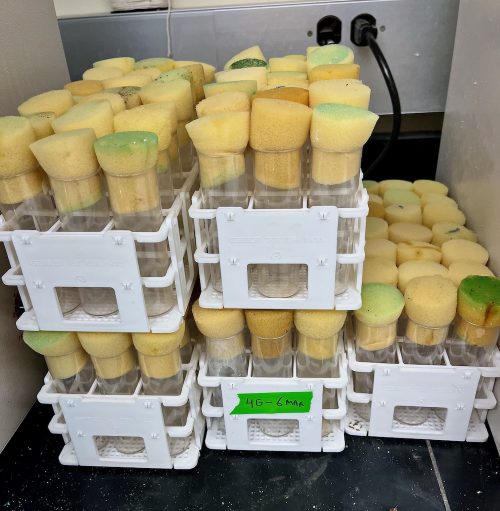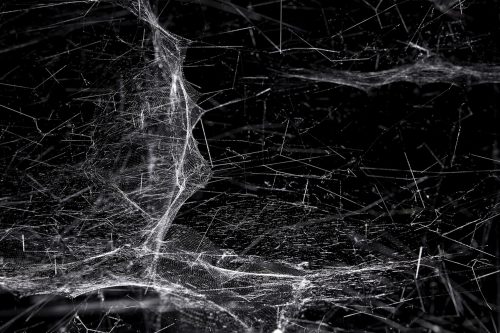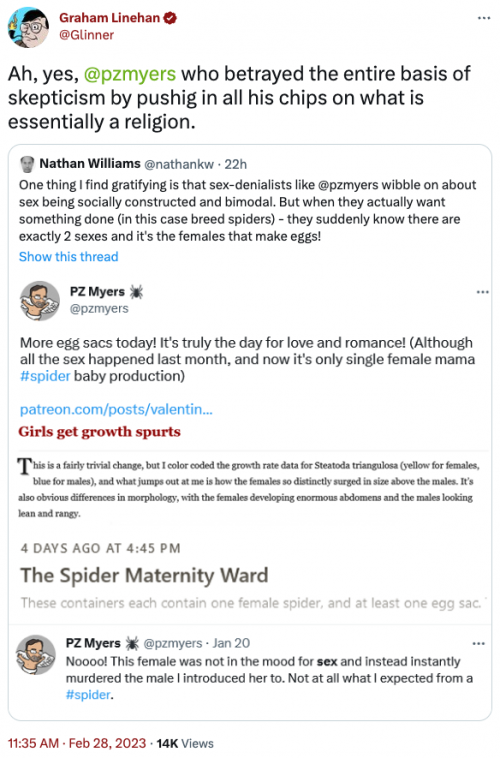I admit, I might have a small problem. I came in to work this morning and found another egg sac had spewed out a bunch of adorable baby spiderlings. (This is a very low resolution shot, I hope the arachnophobes here can bear it.)
This is nothing new or surprising. I’ve had four egg sacs bear fruit since last week, so I’m getting used to it. I sit down and sort out all the spiderlings into separate vials, and tuck them away near the incubators. Not in the incubators — they’re all full of spiders already. They seem to do fine at room temperature.
Well, I think the future of the colony is more than assured at this point. If I raise 150 spiderlings to adulthood, I’d have to take over the neighboring lab spaces and maybe occupy the science building atrium, and I have about 15 more egg sacs waiting in various containers already. I’m going to have to draw a terrible, wicked line.
Future babies will not be coddled and given living quarters and free food. Instead, we have some experiments in microscopy and staining in mind, and they will be killed, quickly and humanely, thrown into fixative, and their bodies treated with various exotic chemical compounds before being mounted on a confocal microscope.
Oh jeez, I sound like a Republican.








